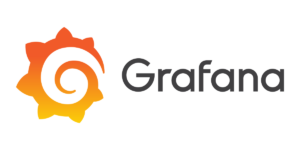
(BOY ANTHONY/Shutterstock)
Grafana Labs, the open observability platform, says it wants to make monitoring systems easier for everyone, not just experts. This week, the company launched a public preview of Grafana Assistant, a new AI tool built into Grafana Cloud.
According to Grafana Labs, the Assistant helps users ask questions about their logs, metrics, and traces in plain language. They say it can suggest queries, speed up investigations, and make dashboard building more intuitive. The goal, as described by the company, is to reduce the learning curve and help teams react faster when systems break.
The timing lines up with what Grafana Labs highlighted in its 2025 Observability Survey. The report points to system complexity and high signal-to-noise ratios as major pain points in observability. The company says Grafana Assistant is its response to that. It claims the tool is trained on real workflows and can guide users through incidents without requiring them to know how to write code or scripts. While it’s still in preview, Grafana Labs presents it as a step toward more accessible, AI-powered monitoring.
The rollout positions Grafana Assistant as part of a broader shift in observability, where natural language and AI-driven context are becoming essential for managing growing telemetry pipelines.
 With teams under pressure to respond faster to incidents while navigating more complex environments, tools like this are being framed not as add-ons, but as core to modern operations. “There’s no doubt that AI is accelerating the pace of innovation. As more organizations adopt a software-driven mindset, they’re using AI to rewire how they operate, from revenue and operations to reliability and customer experience,” said Tom Wilkie, Grafana Labs CTO.
With teams under pressure to respond faster to incidents while navigating more complex environments, tools like this are being framed not as add-ons, but as core to modern operations. “There’s no doubt that AI is accelerating the pace of innovation. As more organizations adopt a software-driven mindset, they’re using AI to rewire how they operate, from revenue and operations to reliability and customer experience,” said Tom Wilkie, Grafana Labs CTO.
“That’s why we built Grafana Assistant: a context-aware AI agent that helps teams move from signal to action faster, right inside the tools they already use. Tools like this – along with other AI-powered capabilities in our open observability cloud, like Asserts knowledge graph and Adaptive Telemetry – are helping companies navigate growing digital complexity and act with greater clarity and speed.”
Earlier this year, Grafana Labs raised $270 million to expand its product lineup and invest in AI. The launch of Grafana Assistant shows how that money is being used. The company had already acquired Asserts.ai to build its knowledge graph, which now helps power the Assistant’s context-aware features. With over 5,000 customers and growing revenue, Grafana Labs is putting its recent gains to work by making AI a central part of how teams monitor and manage their systems.
Grafana Assistant enters a space where other observability vendors are also testing AI copilots. Datadog’s assistant can generate queries and summarize incidents. New Relic’s Grok offers natural language interactions for telemetry and alert configuration. Grafana’s approach stands out by focusing on context and staying inside the tools users already work with.
Grafana says the Assistant is built to support both technical and non-technical users. Developers can ask follow-up questions during an incident without switching tools or writing code. But it’s the less technical users who might benefit most. For teams that don’t have dedicated observability engineers, being able to ask natural-language questions and get helpful answers directly in Grafana could reduce delays and lower the barrier to troubleshooting.
Mikhail Volkov, founder and CEO of Volkov Labs, said it’s already changing how they work: “Grafana Assistant has transformed how we tackle observability data, acting like a seasoned expert woven into the interface. It empowers non-technical users, who might find Grafana’s technical complexities daunting, to swiftly investigate incidents, craft intuitive dashboards, and explore Grafana Cloud with remarkable ease and confidence.”
Users can ask follow-up questions, explore different lines of inquiry, and run several investigations at once within the same interface. This helps reduce tool switching and avoids the need to rewrite complex queries. For dashboards, the Assistant can create or adjust panels using plain prompts. Users can describe what they want to see and get results without writing code. These features are meant to ease daily work and support teams with varying levels of technical experience.
Grafana Labs has not shared how well the Assistant handles edge cases or how it performs across large teams. It will likely take time to learn where the tool works well and where human input is still needed. The launch points to a wider change in how infrastructure tools are being built. More companies are using GenAI to support routine tasks, not replace experts, but to help them reach answers faster with less back and forth.
As the preview moves forward, it will be worth seeing how well Grafana Assistant works at scale and whether Grafana brings similar AI tools to other parts of its platform. For now, it marks a steady shift toward using AI to make observability easier to manage.
Related Items
2025 Observability Predictions and Observations
Can $156M Help Observe Redefine Observability for the AI Era?
Clickhouse Acquires HyperDX To Advance Open-Source Observability


